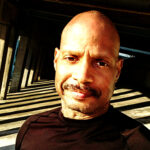
Male Entrepreneurs & Executives Over 40 Part 2
What’s Quietly Eroding Your Edge
Burnout and Andropause
In Part One of the Male Entrepreneurs & Executives Over 40: What’s Quietly Eroding Your Edge series, we explored how burnout often starts subtly through fatigue, poor recovery, and cognitive drag. In Part Two, we’re looking deeper at one of the most overlooked drivers behind that decline: hormonal disruption, specifically andropause.
Burnout in men over 40 is usually framed as psychological overload something that can be managed with better habits or time off. But for many men in high demand roles, burnout is tightly connected to a quieter shift in physiology: andropause, also known as late-onset hypogonadism. Andropause involves a gradual decline in testosterone production, affecting up to 20% of men over age 60 but early signs often begin in the 40s, especially in men exposed to chronic stress, poor sleep, and inflammation.
Here’s where it overlaps with executive burnout:
- Cortisol suppresses testosterone. Chronic psychological stress common in leadership roles raises cortisol, which disrupts communication between the brain and testes (the hypothalamic-pituitary-gonadal axis), reducing testosterone output.
- Gut dysfunction. Burnout itself can drive gut dysfunction by keeping the body in a prolonged stress state, reducing stomach acid, slowing digestion, and altering the microbiome. This poor digestion and microbiome imbalance impair absorption of testosterone building nutrients like zinc, magnesium, B vitamins, and cholesterol, while also increasing systemic inflammation that further lowers testosterone.
- Mitochondrial dysfunction adds to the fatigue. Stress and poor nutrient status impair energy production at the cellular level, worsening fatigue and contributing to hormone imbalance.
- Low-grade inflammation accelerates hormone decline. Inflammatory markers (like CRP or elevated cytokines) reduce Leydig cell responsiveness and increase conversion of testosterone to estrogen through aromatase activity.
These processes don’t happen all at once. They accumulate slowly and because the symptoms overlap with stress or aging, most men don’t realize there’s a hormonal problem until performance, mood, or resilience take a noticeable hit.
Even in men with normal total testosterone, low free testosterone the bioavailable form can lead to reduced stress tolerance, emotional flattening, poor sleep, and slower physical recovery. These symptoms are often dismissed as burnout or aging, but in many cases, what feels like burnout is burnout compounded by hormonal suppression.
One of the most common and overlooked causes is elevated sex hormone-binding globulin (SHBG), which increases with age, stress, inflammation, and certain metabolic conditions. SHBG binds testosterone and reduces the amount that’s biologically available. As a result, free testosterone can drop, even if total testosterone appears within normal range. Clinical studies have confirmed that men with low free testosterone may exhibit clear symptoms of androgen deficiency, despite having normal total testosterone levels (Sartorius et al., 2016).
Burnout and andropause aren’t separate tracks, they intersect and can quietly reshape how your body and mind respond to stress. It is their combined effect that determines how well you can sustain the demands you’ve built your life around. As men it is important to consider the underlying hormonal shifts that occur in our bodies as we age, right alongside diet and lifestyle changes to yield that higher quality of life in our personal lives and careers we all desire.
If you’re looking to get your mojo back book a strategy call: https://blifelike.com/book

Eugene Smith is a Certified Functional Nutrition Practitioner and a researcher in health and food science. He is the creator of B Life Like Nutrition, a holistic Functional Nutrition practice where he works with clients in finding root cause solutions to their health goals.
Eugene also works with athletes to enhance their athletic performance capabilities through his Holistic Athletic Performance Enhancement Program.
In his spare time he trains and competes in track and field as a USATF Masters sprinter.
